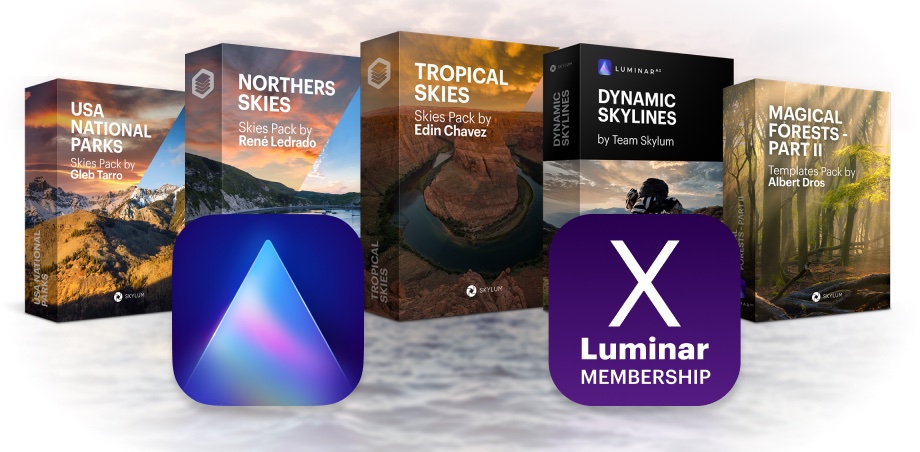

You have to match light direction for it to look natural. I chose one of my sunrise skies, because it was early in the morning when I was there. Not so much in the foreground, of course, but as you move back in the photo, lots of fog. This is a tough test of the new sky replacement AI and tools, because there really was a lot of fog. This is the original, taken on a foggy morning. They spent a lot of time improving sky replacement, so I put it to the ultimate test. You can download a trial version and make up your own mind about Luminar AI.This is v2, and it’s pretty amazing. It doesn’t matter if you use Luminar AI as a standalone program or as a plugin for Lightroom. The Update2 of Luminar AI really brings the program forward, especially with the substantially improved replacement functions for the sky area. The special thing is that you can also create your own template from such a set, which you can then apply to many photos. So you can also integrate your own logo/watermark into the photo. I tried this once and loaded the same multiple textures files into the photo. The textures are PNG files with transparent background. Textures and other overlaysĪlso new is the overlaying of a photo with arbitrary textures, which I also tried once: One works probably also already on the fact that such reflections of the cloud picture can be produced also in large glass surfaces. What is new in the current version is that Luminar AI can now create a matching reflection of the clouds on water surfaces, which looks very coherent overall. Also a rotation is possible, in order to produce in each case an altogether more suitable picture. On the one hand, the cloud image can now be moved directly the in the horizontal or vertical position. The module for exchanging sky parts has been improved. Besides that, there is an option to display the histogram. This is indeed a small, but very useful improvement. Then in the development module an improvement was introduced, that the buttons to disable or reset changes are only visible if changes were made at all in the respective development section. On the other hand, only the few Exif metadata are shown, but maybe that is also a problem of the catalog.īut at least a small improvement compared to version 1.0 from December. This is quite handy when you are in the catalog or single view.

This is now always shown, so you don’t have to open an extra info window anymore. There are a few small improvements, which concern among other things the info panel with the basic Exif data.


 0 kommentar(er)
0 kommentar(er)
